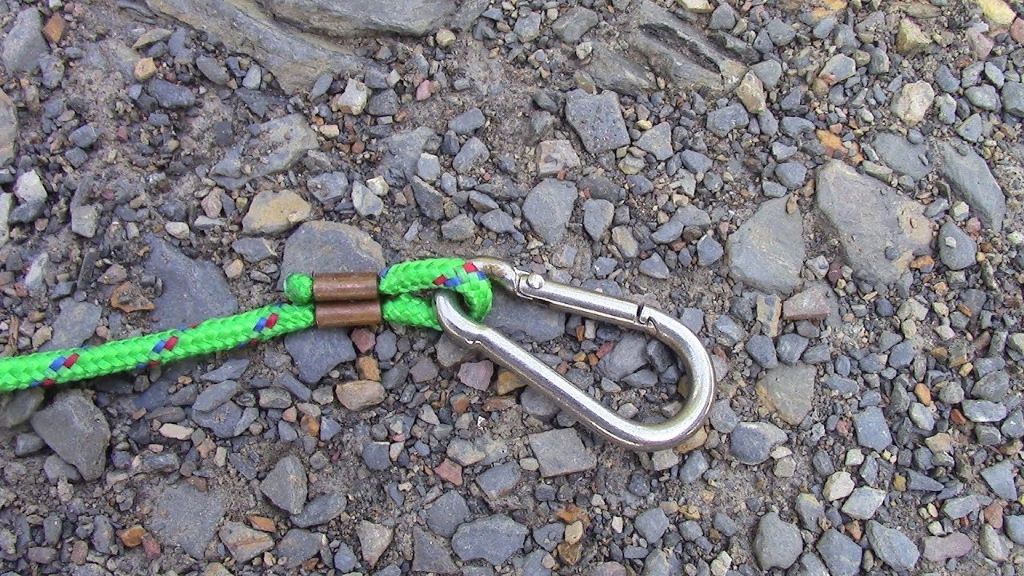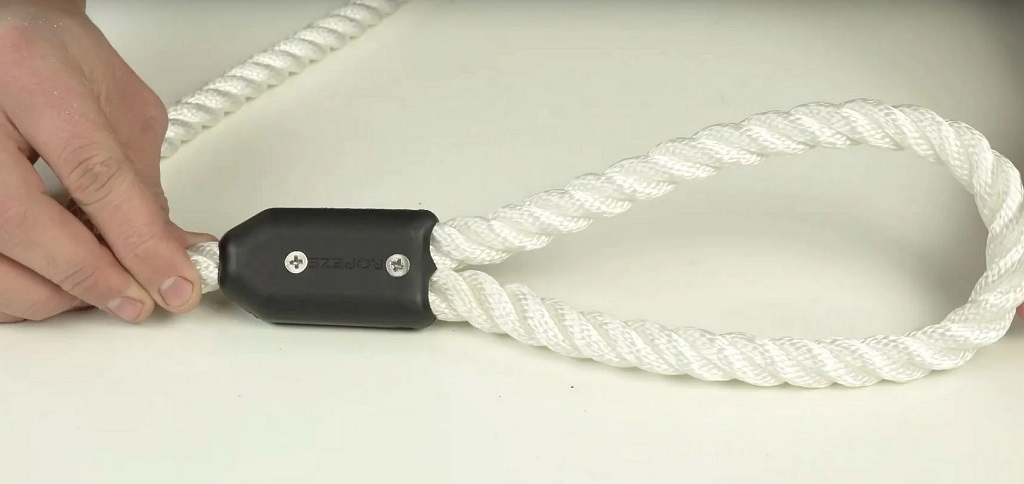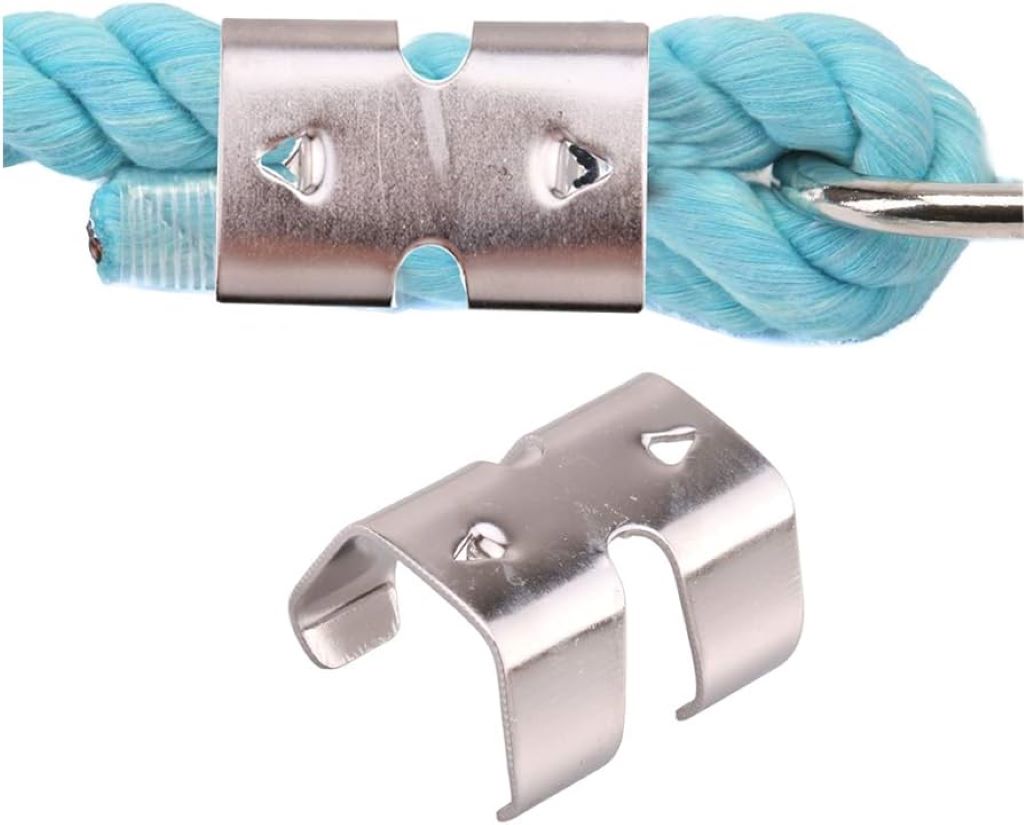
So, you’ve got yourself a nylon rope, and you’re ready to tackle that DIY project or outdoor adventure. You’ve probably heard about nylon rope clamps, but you’re not quite sure how to use them. Don’t fret; we’re here to demystify the world of nylon rope clamps and help you become a rope-clamping pro.
In this comprehensive guide, we’ll take you through the ins and outs of using a nylon rope clamp, from choosing the right one to securing your rope with confidence. Whether you’re a seasoned knot-tying expert or a complete novice, we’ve got you covered. So, let’s dive right in and discover how to make your rope adventures safer and more convenient!
What is a Nylon Rope Clamp?
Before we jump into the nitty-gritty of using a nylon rope clamp, let’s make sure we’re all on the same page about what it actually is. Think of a nylon rope clamp as your trusty sidekick in the world of ropes and cords. It’s a simple yet incredibly handy device designed to secure the ends of a rope, preventing fraying and unraveling.
When climbing, your rope can be like a wild animal: strong and versatile, but in need of some guidance. That’s where a nylon climbing rope clamp comes in – it acts like a leash for your rope, keeping it neat, tidy, and under your control.
Types of Nylon Rope Clamps
Nylon rope clamps come in various shapes and sizes, each tailored to specific purposes. Let’s explore some common types:
- Wire Rope Clamp: This type of clamp is perfect for securing thick, heavy-duty ropes. It’s often used in construction, towing, and rigging applications.
- Loop Clamp: If you need to create a secure loop at the end of your rope, the loop clamp is your go-to choice. It’s commonly used in boating and camping to create handles or attachment points.
- Double Rope Clamp: As the name suggests, this clamp is designed to secure two ropes together. It’s commonly used in rock climbing and rescue operations.
- Adjustable Rope Clamp: This versatile clamp allows you to adjust the size of the loop, making it ideal for dynamic situations where you may need to change the rope’s length quickly.
- Quick Release Clamp: When you need a secure hold that you can release in a flash, the quick-release clamp is your friend. It’s often used in emergency situations where speed matters.
Choosing the right type of nylon rope clamp depends on your specific needs. Make sure to select the one that best suits your intended application.
Tools You’ll Need
Before we dive into the step-by-step guide on using a nylon rope clamp, let’s gather our tools. The good news is that you won’t need a fancy toolbox for this job. Here’s what you’ll need:
- Nylon Rope Clamp: Of course, you’ll need the clamp itself. Make sure it matches the type of rope and application you have in mind.
- Nylon Rope: Choose a high-quality nylon rope that suits your project or adventure. The diameter of the rope should match the specifications of your chosen clamp.
- Gloves: A good pair of work gloves will protect your hands from any rough edges and provide a better grip.
- Measuring Tape: For precision in creating loops or determining the appropriate clamp placement.
- Screwdriver or Wrench: Depending on the type of nylon rope clamp, you might need a screwdriver or wrench to secure it properly.
- Lighter: A lighter will come in handy for melting the rope ends to prevent fraying.
Once you’ve got these basic tools at your disposal, you’re ready to embark on your nylon rope clamping adventure.
Step-by-Step Guide to Using a Nylon Rope Clamp
Now that you’ve gathered your tools and understand the basics, it’s time to get hands-on with your nylon rope clamp. Follow these steps, and you’ll be clamping like a pro in no time:
Step 1: Measure and Cut the Rope
Start by measuring the length of rope you need for your project. Use a measuring tape to ensure precision. Once you have the desired length, cut the rope cleanly using sharp scissors or a rope cutter.
Step 2: Prevent Fraying
To prevent the cut ends of the rope from fraying, hold them near a flame from a lighter for a few seconds until they melt and form a solid tip. Be careful not to burn the rope excessively.
Step 3: Prepare the Clamp
Open the nylon rope clamp by removing any screws or fasteners. Lay the clamp open on a flat surface so that it’s ready for the rope.
Step 4: Insert the Rope
Place one end of the rope into the open clamp. Make sure it goes all the way through and emerges from the other side.
Step 5: Close the Clamp
With the rope inside, close the nylon rope clamp, ensuring it fits snugly around the rope. If your clamp has screws or fasteners, use a screwdriver or wrench to secure them tightly. This step is crucial for a secure hold, so don’t rush it.
Step 6: Double-Check
Give your newly clamped rope a gentle tug to make sure it’s securely held in place. You should feel confident that the clamp won’t slip or come undone during use.
Step 7: Trim Excess Rope
If there’s any excess rope sticking out from the clamp, use your scissors or rope cutter to trim it neatly. This step not only makes your project look tidier but also prevents tripping hazards.
Step 8: Test the Clamped Rope
Before putting your clamped rope to use in your project or adventure, give it a test run. Apply some force and ensure that the clamp holds firm. It’s always better to discover any issues now rather than in the middle of your task.
Congratulations! You’ve successfully used a nylon rope clamp to secure your rope. Now, you’re ready to take on various projects with confidence, knowing that your ropes are in good hands.
Safety Tips and Best Practices
Using a nylon rope clamp is a straightforward process, but it’s essential to prioritize safety. Here are some safety tips and best practices to keep in mind:
- Wear Protective Gear: Always wear gloves when handling ropes and clamps. This will protect your hands from friction, sharp edges, and burns during the melting process.
- Inspect Your Equipment: Before each use, inspect both the rope and the clamp for any signs of wear or damage. If you notice any issues, replace them immediately.
- Follow Manufacturer Instructions: Different clamps may have specific guidelines from the manufacturer. Be sure to read and follow these instructions carefully.
- Proper Clamp Placement: Ensure that you position the clamp correctly on the rope. It should be close to the end but leave enough space to create a secure hold.
- Practice Makes Perfect: If you’re new to using nylon rope clamps, practice on a scrap piece of rope first. This will help you get the hang of it before tackling your main project.
- Store Ropes Properly: When not in use, store your ropes in a cool, dry place away from direct sunlight. This will help extend their lifespan.
By adhering to these safety tips and best practices, you’ll not only ensure your safety but also prolong the life of your ropes and clamps.
Creative Uses for Nylon Rope Clamps
While the primary purpose of nylon rope clamps is to secure ropes, they can be used in a variety of creative ways. Here are some ideas to spark your imagination:
- DIY Handles: Use loop clamps to create sturdy handles for homemade bags, dog leashes, or even a custom jump rope.
- Hammock Attachments: If you love lounging in a hammock, use adjustable rope clamps to easily adjust the height of your relaxation haven.
- Curtain Tiebacks: Add a rustic touch to your home decor by using rope clamps as curtain tiebacks.
- Garden Trellis: Build a garden trellis using ropes and clamps to support climbing plants.
- Campsite Organization: Keep your campsite organized by using loop clamps to hang utensils, lanterns, or even a makeshift clothesline.
Remember, the possibilities are only limited by your creativity. Don’t be afraid to experiment and come up with unique ways to use nylon rope clamps in your projects and everyday life.
Troubleshooting Common Issues
Even with careful use, you may encounter some common issues when working with nylon rope clamps. Here’s how to troubleshoot them:
Issue 1: Clamp Slipping
- Solution: Double-check that you’ve tightened the clamp properly. If it continues to slip, you may need a larger clamp or a different type designed for higher friction.
Issue 2: Fraying Rope
- Solution: If you notice fraying, melt the frayed ends again using a lighter. Be cautious not to overheat the rope.
Issue 3: Difficulty Closing the Clamp
- Solution: If you’re having trouble closing the clamp, make sure the rope is inserted correctly and try using a screwdriver or wrench to assist with tightening.
Issue 4: Clamp Doesn’t Hold
- Solution: Ensure that you’ve selected the right type of clamp for your rope and intended use. If the problem persists, consider replacing the clamp or seeking advice from a hardware store.
Frequently Asked Questions (FAQs)
- Can I reuse a nylon rope clamp?
- Yes, nylon rope clamps can be reused as long as they are in good condition and have not been subjected to excessive wear and tear.
- What’s the maximum weight a nylon rope clamp can handle?
- The weight capacity of a nylon rope clamp depends on its type and size. Always refer to the manufacturer’s guidelines for specific weight limits.
- Can I use a nylon rope clamp on different types of ropes?
- Nylon rope clamps are designed to work with nylon ropes specifically. While they may work with other synthetic ropes, it’s best to use them as intended for optimal performance.
- How do I remove a nylon rope clamp if I need to take it off?
- To remove a nylon rope clamp, simply reverse the process of opening and securing it. If it’s stuck due to corrosion or overtightening, you may need pliers or a clamp remover tool.
- Are nylon rope clamps suitable for marine applications?
- Nylon rope clamps can be used in marine applications, but it’s essential to choose stainless steel clamps to resist corrosion from saltwater.
Conclusion
Congratulations! You’ve completed your crash course in using nylon rope clamps. Silk rope is just one example of what you can use with these simple yet versatile devices, your ticket to securing ropes for various projects and adventures, even keeping your sandbox grounded. Remember to choose the right type of clamp, follow safety guidelines, and get creative with their uses. Now, armed with your newfound knowledge, go forth and conquer those rope-related challenges with confidence!
If you ever find yourself in a bind or facing any rope-related conundrums, remember that a nylon rope clamp is your trusty companion, ready to lend a helping hand (or clamp). Happy clamping!


